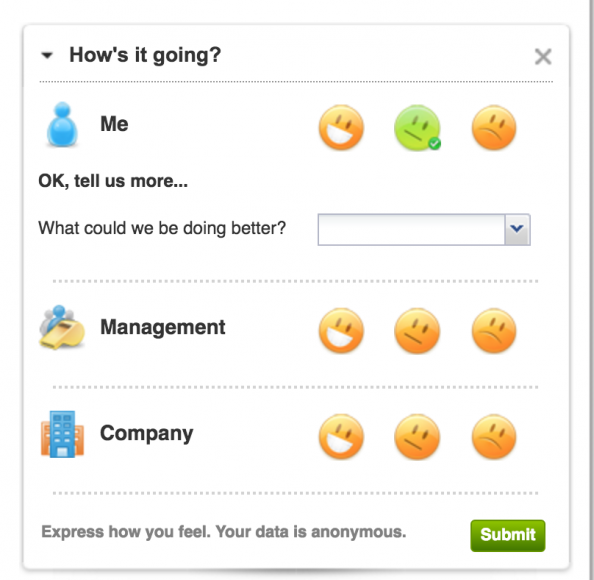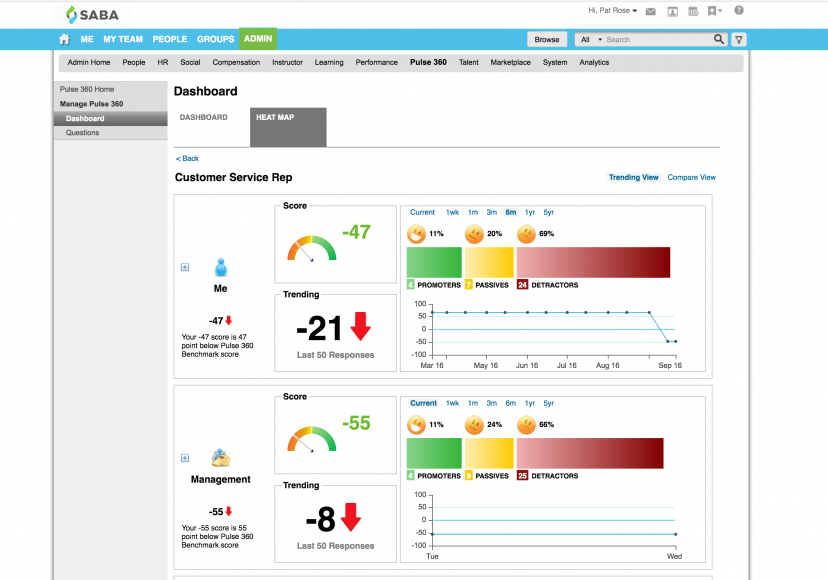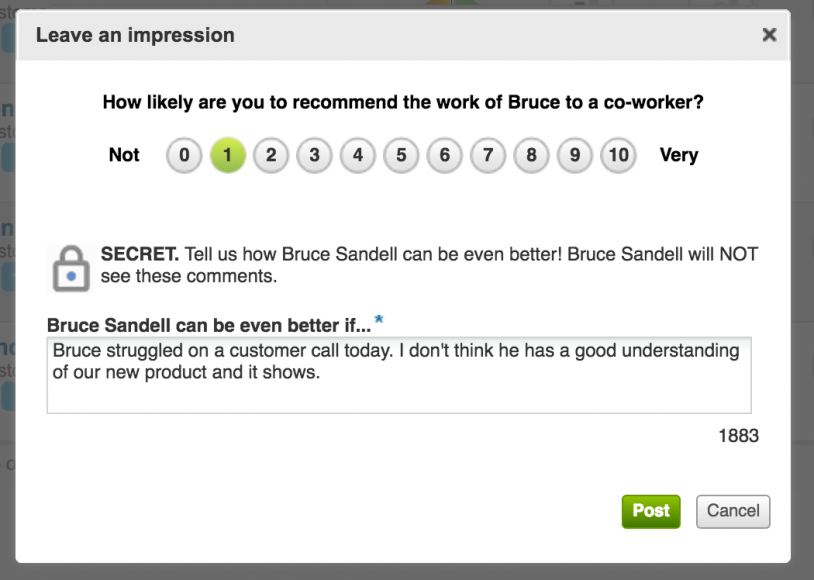Working With Broken Gauges, HR Pros Fail to Move the Needle on Business Outcomes

Talent management tech company Saba’s latest survey tells a “tale of two problems,” according to Theresa Damato, the company’s vice president of worldwide marketing.
The first problem is a missing feedback channel between employees and organizations. According to the survey, the majority of employees say they are rarely, if ever, asked for feedback by their employers. At most, these employees say, their leaders and managers only solicit feedback a few times a year. Baby boomers and women in particular said they felt their employers barely invited their input at all.
The second problem is a gap between leadership’s perception and employees’ reality when it comes to talent programs – a gap likely created and exacerbated by the missing feedback channel.
For example, 75 percent of HR leaders said their organizations were effective at finding, retaining, and developing employees – but only 57 percent of employees agreed. Similarly, 43 percent of HR leaders said their organizations provided easy access to training and development opportunities – but a startlingly low 22 percent of employees agreed.
“These findings suggest a dissatisfaction with the current level and timeliness of feedback,” Damato says. “There is really no effective platform in the workplace for employees to share input and get their voices heard.”
Because employees don’t have satisfactory outlets for sharing their feedback with organizations, many company leaders in HR and other departments have no idea their talent management programs aren’t having the desired effect. Damato compares it to driving a care with broken gauges.
“Think about feedback like the gauges in your car that tell you when you need gas or when your tire is about to go flat,” Damato explains. “If you don’t get those lights on your dashboard, you think everything is good. So you’re driving along, and you’re losing tire pressure, but if the gauge doesn’t light up, you don’t know it. That’s the kind of perception/reality gap we have here.”
Organizations are setting up and investing in employee development programs, performance management processes, and other initiatives to drive business outcomes. However, many of these programs are failing to move the needle, so to speak – and leaders have no idea.
What’s more, Damato believes the results of this survey are only “a warning shot.”
“It’s really about to get real with the millennials [joining the workforce],” she says. “They’re pretty famous for requiring instant, constant feedback, and they really want to know that their input is heard and valuable.”
Employees are already dissatisfied with the state of feedback in their organizations. Imagine how much worse it could get when the millennials comprise roughly half the U.S. workforce.
Can Tech Solve the Problem?
Timely, actionable feedback is clearly a problem for many organizations, which has driven Saba to step in and attempt a solution in the form of Saba Pulse 360.

Screenshot of Saba Pulse 360’s Employee Survey Feature
Envisioned as a step above the traditional practice of annual employee surveys, Saba Pulse 360 aims to not only allow managers and leaders to collect real-time feedback, but also to use that feedback to make quick adjustments to improve the business outcomes of talent management programs.
Damato explains that Saba Pulse 360 has two main components. The first is a regular employee survey that allows employees to share feedback about their own careers, their managers, and the organization overall. These temperature-taking questions are then followed up by three more specific questions that dig more deeply into areas like career development, compensation, culture, and training.

Screenshot of Saba Pulse 360’s Leadership Dashboard
This data is then displayed on a dashboard that allows leaders to see how employees are feeling overall. They can also drill down into more detailed graphs that show what employees like, what employees don’t like, and where specific problems are occurring in the organization according to filters like department, job function, and region.
“So, for example, if you notice a challenge for customer service, you can drill further and find that they feel they aren’t getting adequate training,” Damato says. “Instead of a nebulous problem, it’s very clear where the problem is and what needs to be done.
The second major component of the tool is a “Net Performance Score,” modeled on the Net Promoter Score that is popular in the customer satisfaction realm.

Screenshot of Saba Pulse 360’s Net Performance Score Feature
Damato explains that the feature “allows colleagues and managers to give employees feedback and recognition through impressions. In this way, it can be a daily, real-time performance tool that can replace the annual performance review.”
As with the employee surveys, the data collected by the Net Performer Score is delivered to leaders via a dashboard that allows them to see how their employees are doing and who could use some additional coaching.
–
Regardless of what feedback platforms your organization currently has in place, the results of Saba’s survey send a clear message: It’s time to take stock of how well those platforms are working. For all you know, your company may be wasting money on talent management programs that aren’t driving any of the outcomes you want them to.

